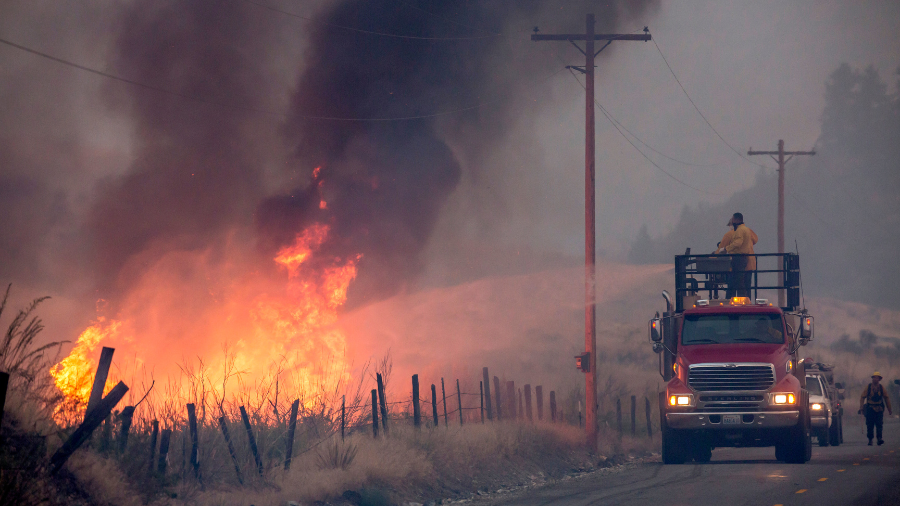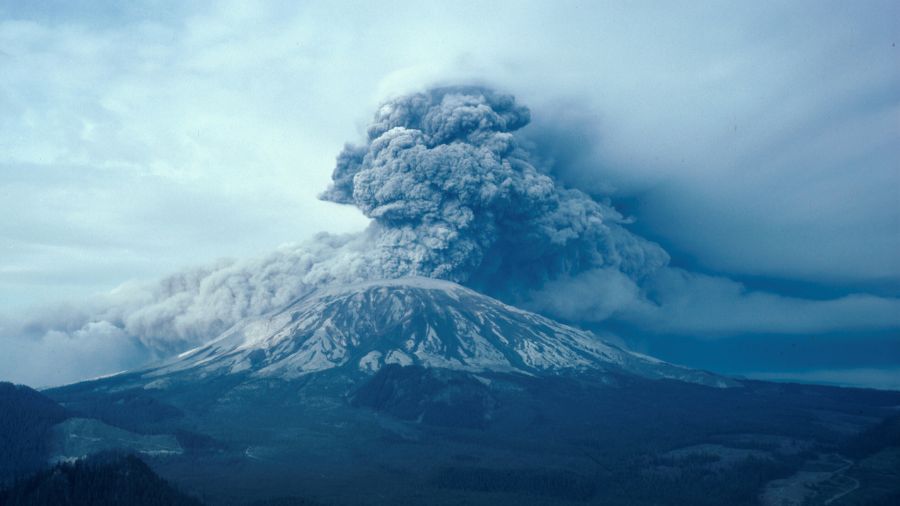Maui and Spokane: 2 public warning systems and the need for preparedness
Sep 28, 2023, 6:03 PM

OMAK, WA - AUGUST 22: A makeshift fire truck puts water on a wildfire, which is part of the Okanogan Complex, as it burns through brush on August 22, 2015 near Omak, Washington. The fires have burned more tha 127,000 acres. (Photo: Stephen Brashear/Getty Images)
(Photo: Stephen Brashear/Getty Images)
The tragic wind-whipped wildfire that burned through Lahaina on the Hawaiian island of Maui last month took many lives. The public warning system with that wildfire broke down. How does the public warning system here in Washington shape up in comparison?
First, what is the warning system and how well does it work? Dennis Mileti, Ph.D., a former director of the Natural Hazards Center in Colorado, used an analogy to simply describe the warning system – a three-legged stool.
Leg No. 1 of the three-legged stool is detection and warning of the event. That event can be weather-related like a wind storm or tornado, or a non-weather-related event like an escaped prisoner, hazardous spill or release, or an Amber Alert.
Leg No. 2 of the three-legged stool is dissemination of the warning message to the target audience. The warning dissemination process involves a wide spectrum of resources including broadcasters (TV, radio, cable) and the National Oceanic and Atmospheric Administration’s NOAA Weather Radio All-Hazards through the Emergency Alert System (EAS), cell phones through Wireless Emergency Alerts (WEA), opt-in services from local jurisdictions like Alert Seattle and more.
Leg No. 3 of the three-legged stool is response. Do those in the warning targeted area know what to do when they receive the warning message? Response involves the education process, in schools, public meetings, outreach efforts, and other opportunities.

The elements of an effective warning system as noted as a three-legged stool (Image courtesy of Ted Buehner, KIRO Newsradio)
In order for the warning system to work well, all three legs of the stool must work in concert. If one or more legs of the three-legged stool fail, the stool falls over, meaning the warning system failed.
Investigation of the Maui firestorm continues, yet it is clear the warning system broke down. Chris Leonard, President of the Hawaii Association of Broadcasters, noted in a recent interview authorities and the public relied heavily on the use of cell phones to send and receive warning information about the fast-moving wildfire. The problem was the power and cell phone infrastructure was burned by the fire, resulting in no service.
Related news: First congressional hearing on Maui wildfire to focus on island’s sole electric provider and grid
In addition, local authorities chose not to use the outdoor tsunami siren system to avoid sending the wrong message of having people head to higher ground right into the teeth of the oncoming flames. The siren system also was without power.
The warning system’s use in Eastern Washington
Just days later, with ongoing warm and very dry conditions, several wind-driven wildfires erupted in Spokane County. In this episode, the warning system worked far better.
Simone Ramel-McKay of Spokane County Emergency Management told KIRO Newsradio at the Washington State Emergency Management Association Conference in Spokane last week they initially used EAS to alert the county of the emerging Gray and Oregon Road wildfires with a focus on evacuations in the affected areas. They also used WEA and its ability to pinpoint messages dozens of times as the fire rapidly progressed and as winds shifted, turning the fire in other directions. The county also deployed an experimental interactive map in its WEA messaging for the first time which was well received by the public.
According to NWS Spokane staff, the county’s EAS message reached them and was relayed on their Spokane NOAA Weather Radio station, reaching people with weather radio receivers. Area news-oriented broadcasters also received the EAS message and aired it. Both the NWS and broadcasters followed the county’s Facebook updates complete with maps of where the fires were and where they were moving, and shared them with numerous updates.
Higher prices: Homeowners face rising insurance rates as climate change makes wildfires, storms more common
Of interest, county emergency management staff chose not to use X, formerly known as Twitter, since there were people spreading misinformation about the situation on the platform.
Law enforcement also went door to door in the evacuation endeavor. Together, all these efforts combined to create a more effective warning system. Even though several hundred homes and many outbuildings were burned, only two lives were lost in both of these fast-moving wildfires. The public voiced how well the process went well.
Comparing the tragic Maui firestorm with the Spokane county fires, it is clear that the use of multiple warning systems like EAS, WEA, NOAA Weather Radio and more is critical to reach more people in a timely manner. Spokane area broadcasters played a key role in sharing warning information, and Facebook provided a social media means to share additional information.
Planning ahead
As the September National Preparedness Month comes to an end, it is important to highlight the need to receive public warning messages multiple ways in case one or more systems like cell phone service are not available. For instance, the state of Washington is the second most prone state for earthquakes, second to California, and a big earthquake would likely disrupt both power and phone systems.
Other major events could knock power and communications offline as well. Yet, KIRO Newsradio and other broadcasters will quite likely be on air providing critical emergency information.
More from Ted Buehner: Looking back on a warm and dry summer of 2023 as fall begins
As the holidays near, obtaining NOAA Weather Radio All-Hazard receivers for your home, car, business, and more, could be a great gift idea. In addition, with fall here and winter just around the corner, now is a good time to prepare for whatever nasty weather arrives in Western Washington including redundant means to receive warning messages.














